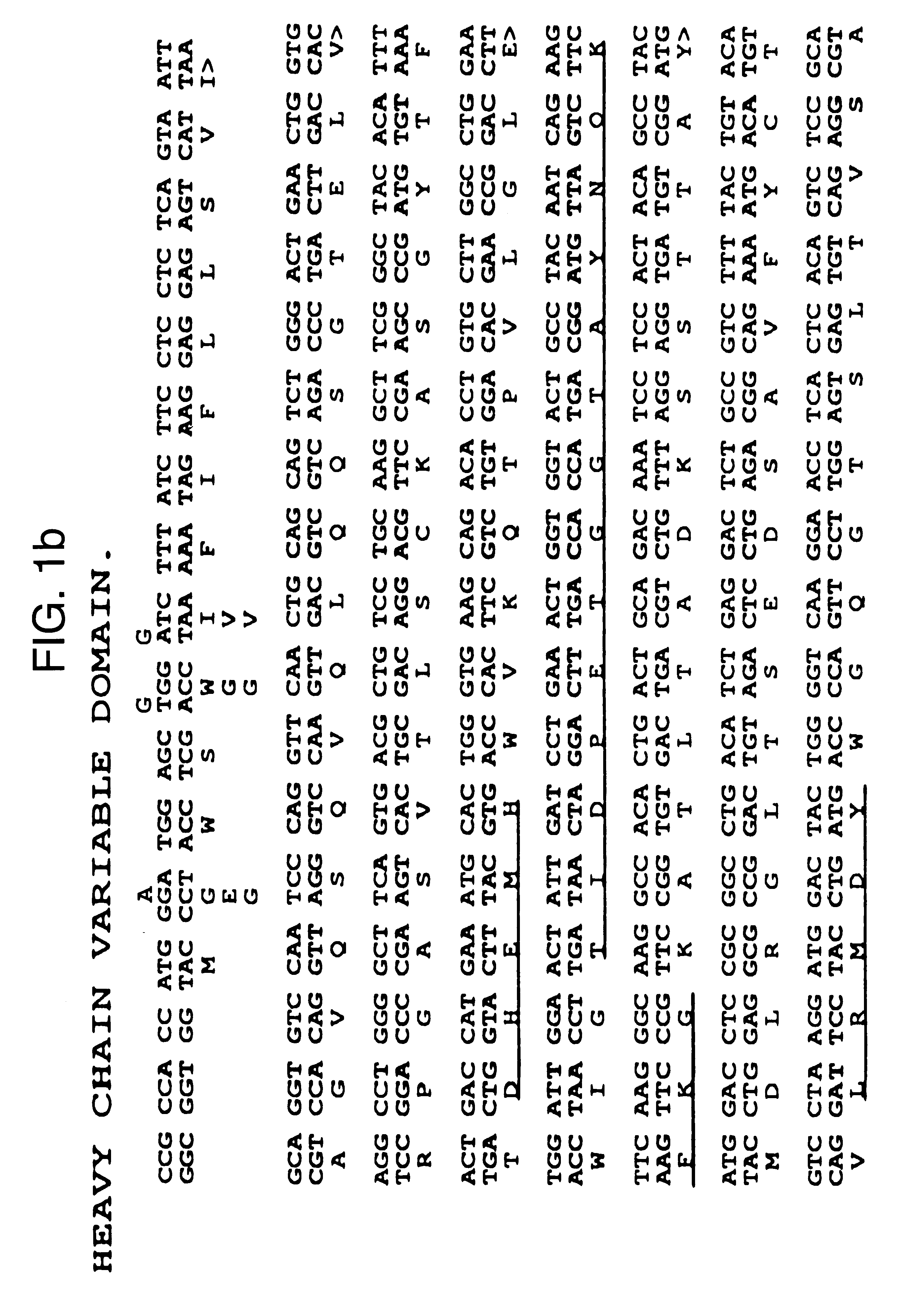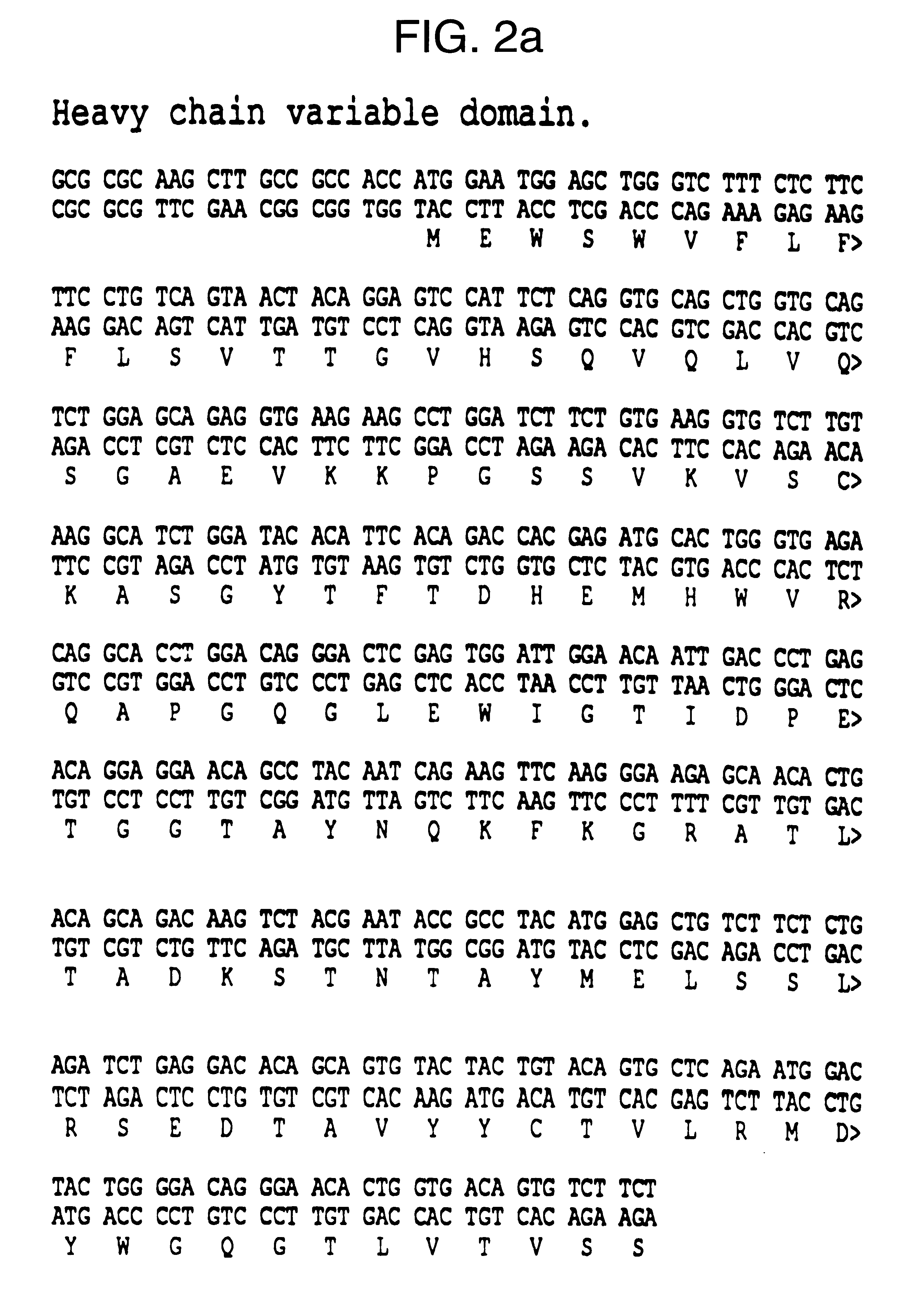Antibodies against E-selectin
a technology of eselectin and antibodies, applied in the field of antibodies against eselectin, can solve the problems of causing the immune response to rise to the undesirable term hama, and reducing the effectiveness of rodent monoclonal antibodies
- Summary
- Abstract
- Description
- Claims
- Application Information
AI Technical Summary
Benefits of technology
Problems solved by technology
Method used
Image
Examples
example 2
We have investigated the effects of ENA-2 F(ab)'.sub.2 and the fully engineered human variant, hENA-2 (L235A), in cytokine induced inflammation in baboons.
Intradermal injections of recombinant human IL-1 .alpha. (rhIL-1), 0.1 and 1.0 .mu.g / site, and recombinant human TNF .alpha.(rhTNF), 5 .mu.g / site, were made in adult baboons. Injections were made, to a pre-determined random grid pattern, at 2, 4 or 8 hours prior to taking full thickness skin biopsies with an 8 mm diameter skin biopsy punch. Each mediator was given as a 0.1 ml injection in triplicate sites at two time points. Light general anaesthesia was used for the biopsies. The tissues were processed for either formalin fixed paraffin wax histology with haematoxylin and eosin staining or chilled to -70.degree. C. for cryostat sectioning and immunohistochemical analysis. Blood samples were taken to determine if the treatment had any effect on circulating blood cells and for antibody pharmacodynamic analysis. Control animals rece...
example 3
The engineered human anti-E-selectin antibody, the production of which is described in Example 1 (ie hENA-2,L235A,S228P.sub..gamma.4 isotype) recognises human E-selectin and, under appropriate conditions, prevents PMN adhesion to activated endothelial cells. In order to confirm that the antibody could inhibit the migration of leukocytes into human skin in an in vivo setting a model using human skin grafted onto SCID mice has been utilised. This model was first reported by Yan et al (J. Clin Invest. 91 986-996 (1993)) and has subsequently been used to show that a murine anti-human E-selectin antibody can inhibit leukocyte trafficking Yan et al (J. Immunol 152 3053 (1994)). In this model mouse leukocytes (predominantly PMN) migrate into the human skin via human endothelial cells in response to injected cytokine.
METHOD
After anaesthesia, 6-8 week old SCID mice (purchased from Wistar Institute) were prepared for transplantation by shaving the hair from a 5 cm.sup.2 area on each side of t...
example 4
hENA-2(L235A, S228P)--Complement Dependent Lysis
Method
Human dermal microvascular endothelial cells, (HMVECS), (Clonetics) were plated at 5.times.10.sup.3 cells per well into 96 well microtitre plates and cultured in Endothelial Growth medium, (EGM), (Clonetics). 5 Days after plating the cells were labelled with 50 Kbq per well .sup.51 Chromium overnight at 37.degree. C. The cells were then washed in EGM and treated with human TNF.alpha., (R & D Systems), at 20 ng / ml in EGM for 6 h at 37.degree. C. to upregulate E-Selectin.
The plates were washed 5 times in Dulbecco's modified eagle's medium, (DMEM), containing 1% FCS.
Test samples were then added to the appropriate wells. The monoclonal antibodies, (W6 / 32, mouse anti-human Class I; hENA-2(L235A) and hENA-2(L235A, S228P) anti-human E-selectin), were added to give a final concentration of 10 .mu.g / ml in DMEM+1%FCS. Rabbit complement (reconstituted according to manufacturer's recommendation) was added to give a final concentration of 12....
PUM
| Property | Measurement | Unit |
|---|---|---|
| Fraction | aaaaa | aaaaa |
| Interaction | aaaaa | aaaaa |
Abstract
Description
Claims
Application Information
 Login to View More
Login to View More - R&D
- Intellectual Property
- Life Sciences
- Materials
- Tech Scout
- Unparalleled Data Quality
- Higher Quality Content
- 60% Fewer Hallucinations
Browse by: Latest US Patents, China's latest patents, Technical Efficacy Thesaurus, Application Domain, Technology Topic, Popular Technical Reports.
© 2025 PatSnap. All rights reserved.Legal|Privacy policy|Modern Slavery Act Transparency Statement|Sitemap|About US| Contact US: help@patsnap.com



